UN Trade and Development (UNCTAD) in its recently released report noted that Indian economy grew by 6.7% in 2023 and is expected to expand by 6.5% in 2024.
The following are key highlights on the Indian economy included in the UNCTAD report
| Must Read | |
| NCERT Notes For UPSC | UPSC Daily Current Affairs |
| UPSC Blogs | UPSC Daily Editorials |
| Daily Current Affairs Quiz | Daily Main Answer Writing |
| UPSC Mains Previous Year Papers | UPSC Test Series 2024 |
Recently, the Russian peacekeepers have begun withdrawing from Nagorno-Karabakh region.
Russian troops had begun leaving positions held as part of a Russia-brokered 2020 ceasefire between Baku (Capital of Azerbaijan) and Yerevan (Capital of Armenia).
Nagorno-Karabakh, known as Artsakh by Armenians, is a mountainous region at the southern end of the Karabakh mountain range, within Azerbaijan.
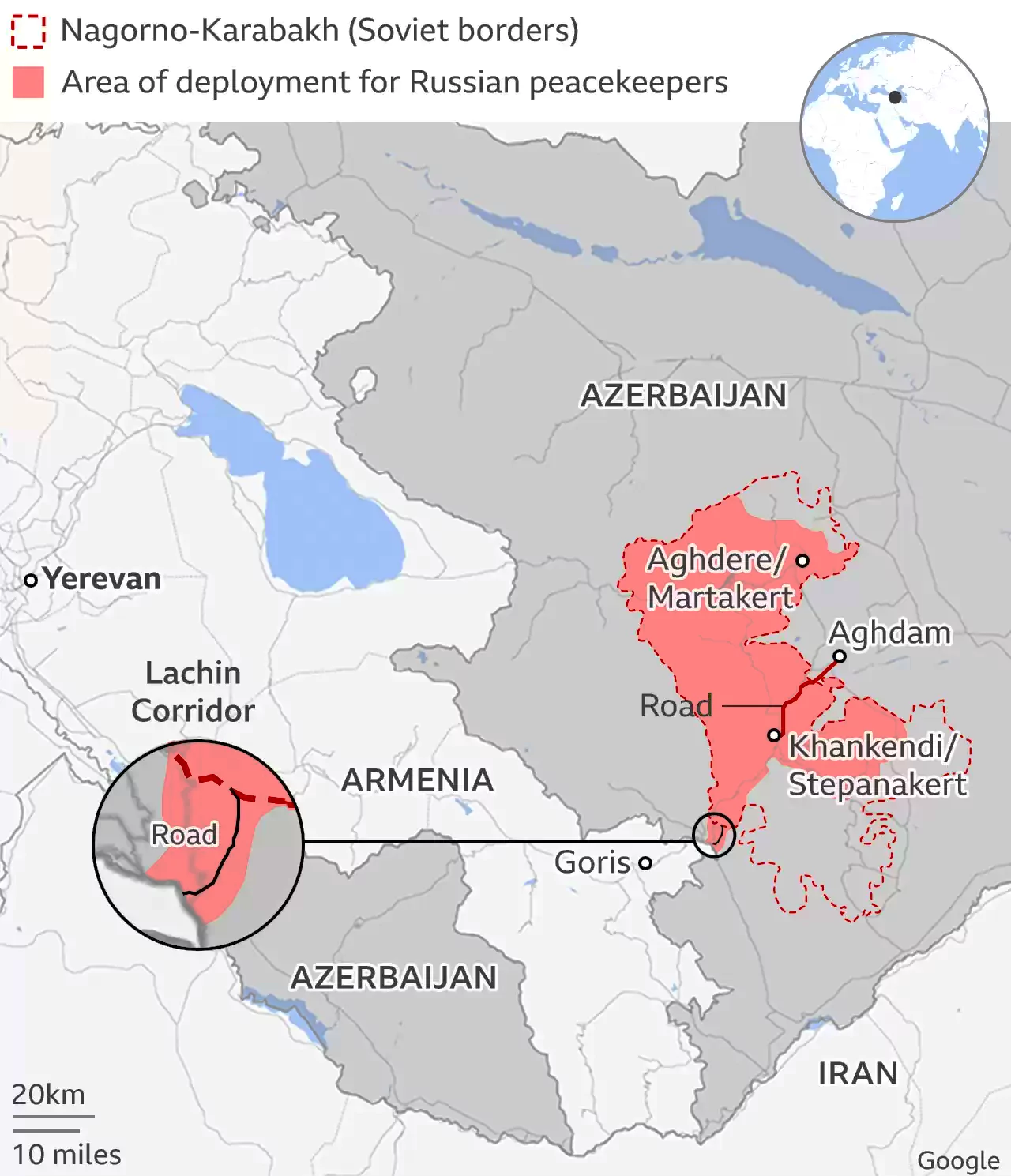
About Collective Security Treaty Organization (CSTO)It is an intergovernmental military alliance in Eurasia formed in 2002.
|
|---|
| Must Read | |
| NCERT Notes For UPSC | UPSC Daily Current Affairs |
| UPSC Blogs | UPSC Daily Editorials |
| Daily Current Affairs Quiz | Daily Main Answer Writing |
| UPSC Mains Previous Year Papers | UPSC Test Series 2024 |
The Jammu and Kashmir High Court ordered the release of Jaffar Ahmad Parray, who was detained under the state’s Public Safety Act, 1978 (PSA).
Preventive Detention of Parray: Parray was placed in preventive detention under orders of the District Magistrate (DM), after the police accused him of being an Over Ground Worker (OGW) for terrorist groups Lashkar-e-Taiba and Hizbul Mujahideen.
Declaration of Parray’s Preventive Detention as Unlawful: The High Court held that Parray’s preventive detention was unlawful and invalidated his detention order.
What is Preventive Detention?It means detention of a person without trial & Conviction by a Court on mere reasonable suspicion of him doing activity dangerous to public order. Law Making Power: Both Parliament & State legislatures have authority to make law of Preventive Detention.
Laws made by the Parliament for the Preventive Detention:
|
|---|
Section 8(1)(a): It allows the government to detain individuals to prevent them from “acting in any manner prejudicial to the security of the State or the maintenance of public order.
Section 8(2): Under this, the DM is empowered to pass an order to detain any person if they are satisfied that the person falls under the condition provided in Section 8(1)(a).
Section 10-A: It states that detention orders cannot be deemed invalid “merely” because the grounds of detention are vague, non-existent, not relevant, not connected with the detained person, or “invalid for any other reasons whatsoever”.
Section 13(1): It requires the DM to disclose the grounds for detention to the person detained within five days of issuing the order (although this may be extended to 10 days, in “exceptional circumstances”).
Section 13(2): It states that the DM is not required to disclose facts “which it considers to be against the public interest to disclose.”
Detention Grounds of Police Dossier: Copy of The HC observed that the grounds for detention outlined in Section 8(1)(a) of the act, as documented by the DM, were simply a direct copy of the police dossier.
Significance of Representation in Preventive Detention Cases: Representation against a preventive detention submitted by a detenu is not meant to be a routine piece of paper for the District Magistrate”.
Demonstration of Application of Mind by DM: He emphasized the necessity for the DM to demonstrate “application of mind” when presented with such a representation.
Detention Without Criminal Past: He arrived at the conclusion that the police had picked him up and questioned him without filing a criminal case against him or documenting any previous criminal behavior.
Thus, considering the lack of application of mind by the DM and the actions of the police, the root of the petitioner’s preventive detention is illegal and coercive.
Surinder Singh v. Union Territory of Jammu and Kashmir: In this case, the HC quashed a detention order against an alleged “history-sheeter” (someone who has been implicated in multiple chargesheets in the past).
Vijay Kumar v State of J&K (1982): The DM-issued an order of preventive detention against someone who was already in jail and made no note of that fact in the order.
| Must Read | |
| NCERT Notes For UPSC | UPSC Daily Current Affairs |
| UPSC Blogs | UPSC Daily Editorials |
| Daily Current Affairs Quiz | Daily Main Answer Writing |
| UPSC Mains Previous Year Papers | UPSC Test Series 2024 |
Indian Council of Medical Research (ICMR) to fund a study to analyze the number of maternal deaths related to heart diseases and to develop a treatment protocol to prevent future mortality.
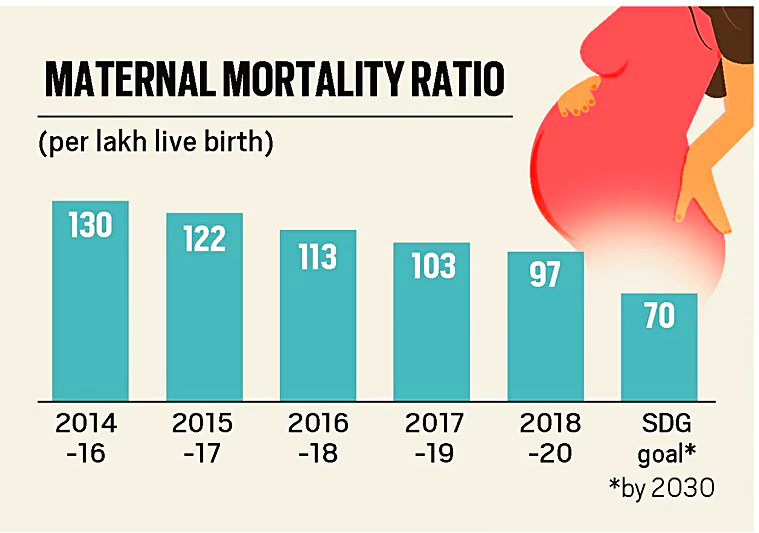
The ICMR study will be held across 50 centres across India to be representative of the Indian population with 7 AIIMS also participating.
Metabolic changes due to Pregnancy: As per a Lancet study, the risk of heart failure in a mother increases steadily by 24 weeks, plateaus at 30 weeks and peaks again around delivery with significant cardiovascular changes happening in the mother within the first eight weeks of pregnancy.
Maternal Mortality Ratio (MMR) is the number of maternal deaths during a given time period per 100,000 live births during the same time period.
Government Initiatives to Reduce Maternal Mortality Ratio (MMR)Here are some government initiatives to reduce the maternal mortality ratio (MMR) in India:
|
|---|
| Must Read | |
| NCERT Notes For UPSC | UPSC Daily Current Affairs |
| UPSC Blogs | UPSC Daily Editorials |
| Daily Current Affairs Quiz | Daily Main Answer Writing |
| UPSC Mains Previous Year Papers | UPSC Test Series 2024 |
Mumbai and Dubai experienced contrasting extreme weather occurrences triggered by an anticyclone.
Heat Wave in Mumbai: The Konkan coast of India, especially the city of Mumbai, has been undergoing a humid heat wave characterized by intense humidity.
Floods in Dubai: Torrential rain accompanied by lightning inundated large areas of the city, causing flooding.
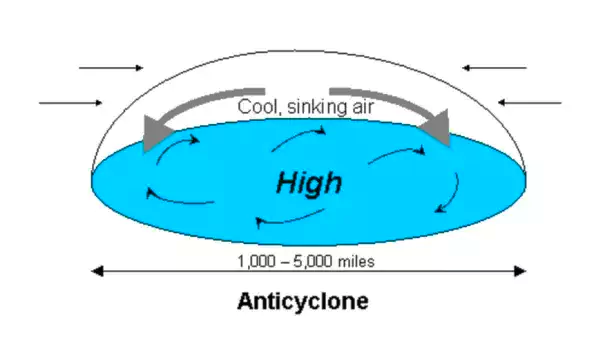
An anticyclone also known as a high pressure area is an area of high atmospheric pressure where winds blow in a downward sinking motion and in the process, compress and heat up. This causes dry and hot weather.
| Pressure System | Pressure Condition at the centre | Pattern of Wind Direction | |
| Nothern Hemisphere | Southern Hemisphere | ||
| Cyclone | Low | Anticlockwise | Clockwise |
| anticyclone | High | Clockwise | Anticlockwise |
Heat dome: It occurs when an area of high-pressure stays over a region for days and weeks. It traps warm air for an extended period.
|
|---|
| Must Read | |
| NCERT Notes For UPSC | UPSC Daily Current Affairs |
| UPSC Blogs | UPSC Daily Editorials |
| Daily Current Affairs Quiz | Daily Main Answer Writing |
| UPSC Mains Previous Year Papers | UPSC Test Series 2024 |
A recent study has discovered that the desert formed by the drying Aral Sea has significantly increased dustiness in Central Asia.
It is also known as Orol Dengizi (Uzbek) or Aral Tengizi (Kazakh).
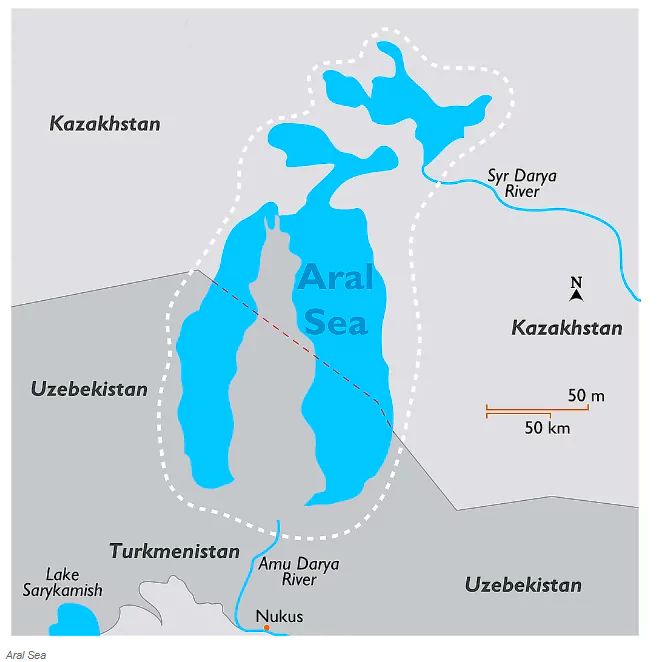
The key findings of the report shows various socio-economic impacts of the Aral Sea Crisis;
| Desertification is when drylands become less productive because of natural or human-made causes.
Impacts of Desertification
|
|---|
| The Siberian High
It is a big area of cold, dry air that gathers in northeastern Eurasia from November to February. |
|---|
Here are some international efforts to address the Aral Sea crisis:
| Must Read | |
| NCERT Notes For UPSC | UPSC Daily Current Affairs |
| UPSC Blogs | UPSC Daily Editorials |
| Daily Current Affairs Quiz | Daily Main Answer Writing |
| UPSC Mains Previous Year Papers | UPSC Test Series 2024 |
Mount Ruang erupted several times in Indonesia’s outermost region forcing hundreds to evacuate.
Mount Ruang is a stratovolcano located in the North Sulawesi Province of Indonesia prone to regular volcanic activity.
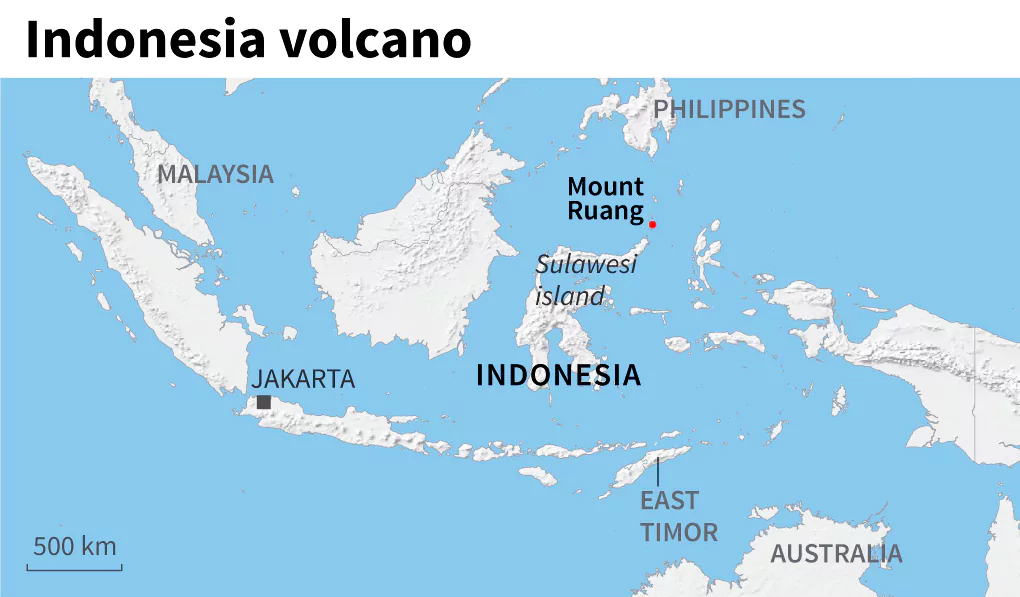
Indonesia, a vast archipelago nation which experiences frequent seismic and volcanic activity due to its position on the Pacific “Ring of Fire”.
The Ring of Fire, also referred to as the Circum-Pacific Belt is a string of hundreds of volcanoes and earthquake-sites which runs along the Pacific Ocean.
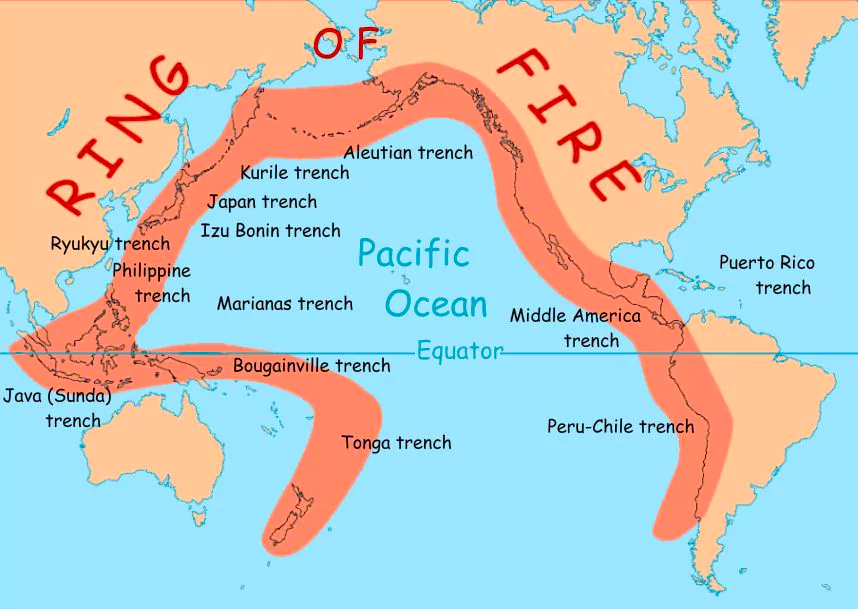
| Must Read | |
| NCERT Notes For UPSC | UPSC Daily Current Affairs |
| UPSC Blogs | UPSC Daily Editorials |
| Daily Current Affairs Quiz | Daily Main Answer Writing |
| UPSC Mains Previous Year Papers | UPSC Test Series 2024 |
The social media platform X (formerly Twitter) withheld four posts by the political parties on takedown requests by the Election Commission of India (EC).
Violation of MCC: According to the EC, the posts in question violated the Model Code of Conduct (MCC), and that X had a responsibility to remove these posts as it had agreed to the ‘Voluntary Code of Ethics for social media platforms’.
Model Code of Conduct (MCC):
|
|---|
Representation of People Act (RPA), 1951: It contains provisions related to:
|
|---|
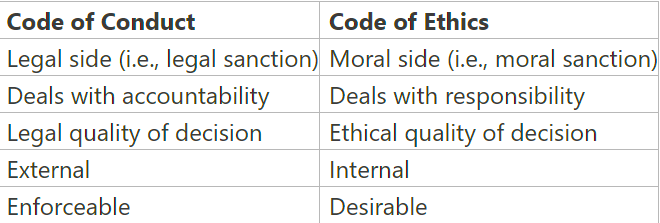
| Must Read | |
| NCERT Notes For UPSC | UPSC Daily Current Affairs |
| UPSC Blogs | UPSC Daily Editorials |
| Daily Current Affairs Quiz | Daily Main Answer Writing |
| UPSC Mains Previous Year Papers | UPSC Test Series 2024 |
Recently, the Reserve Bank of India (RBI) has allowed investments in India’s Sovereign Green Bonds (SGrBs) by Foreign Institutional Investors (FIIs).
About Green Bonds
About Foreign Institutional Investors (FIIs)
|
|---|
| Must Read | |
| NCERT Notes For UPSC | UPSC Daily Current Affairs |
| UPSC Blogs | UPSC Daily Editorials |
| Daily Current Affairs Quiz | Daily Main Answer Writing |
| UPSC Mains Previous Year Papers | UPSC Test Series 2024 |
The Indian Meteorological Department (IMD) has issued alerts regarding heatwaves for various parts of India.
| Relevance For Prelims: Rising Earth Temperature, Rising Heat In India, Heat Waves, IMD Alert On Heatwaves, and Heat Action Plans (HAPs) For Heat Waves In India.
Relevance For Mains: India’s Heat Action Plans to Tackle Heatwaves- Background, Status, Components, Challenges, and Way Forward. |
|---|
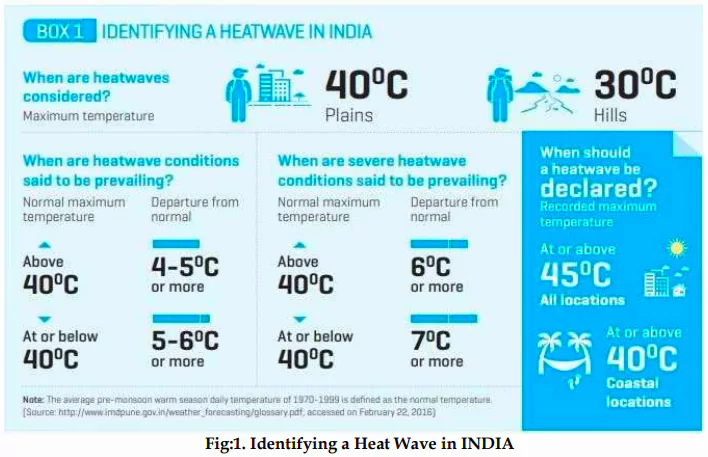
Humid Heatwave:
|
|---|
Government Initiative Regarding Heatwaves
|
|---|
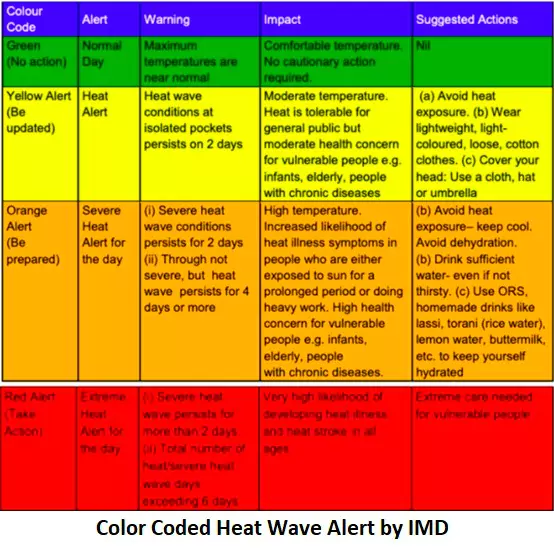 Impact on Livestock: Increased temperatures lead to heat stress in livestock, significantly reducing productivity such as milk output in dairy farming.
Impact on Livestock: Increased temperatures lead to heat stress in livestock, significantly reducing productivity such as milk output in dairy farming.
| Must Read | |
| NCERT Notes For UPSC | UPSC Daily Current Affairs |
| UPSC Blogs | UPSC Daily Editorials |
| Daily Current Affairs Quiz | Daily Main Answer Writing |
| UPSC Mains Previous Year Papers | UPSC Test Series 2024 |
<div class="new-fform">
</div>
